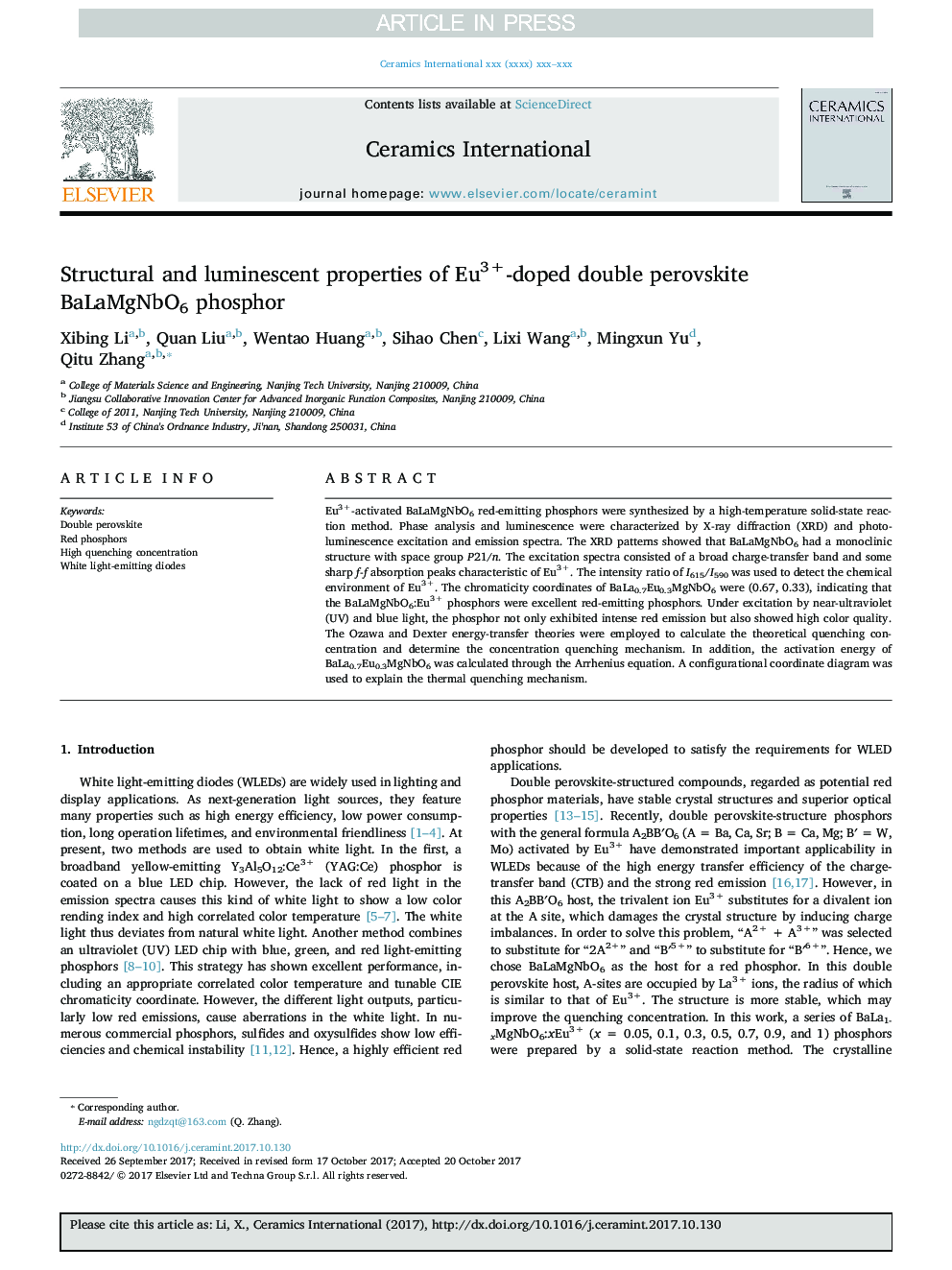| Article ID | Journal | Published Year | Pages | File Type |
|---|---|---|---|---|
| 7889156 | Ceramics International | 2018 | 7 Pages |
Abstract
Eu3+-activated BaLaMgNbO6 red-emitting phosphors were synthesized by a high-temperature solid-state reaction method. Phase analysis and luminescence were characterized by X-ray diffraction (XRD) and photoluminescence excitation and emission spectra. The XRD patterns showed that BaLaMgNbO6 had a monoclinic structure with space group P21/n. The excitation spectra consisted of a broad charge-transfer band and some sharp f-f absorption peaks characteristic of Eu3+. The intensity ratio of I615/I590 was used to detect the chemical environment of Eu3+. The chromaticity coordinates of BaLa0.7Eu0.3MgNbO6 were (0.67, 0.33), indicating that the BaLaMgNbO6:Eu3+ phosphors were excellent red-emitting phosphors. Under excitation by near-ultraviolet (UV) and blue light, the phosphor not only exhibited intense red emission but also showed high color quality. The Ozawa and Dexter energy-transfer theories were employed to calculate the theoretical quenching concentration and determine the concentration quenching mechanism. In addition, the activation energy of BaLa0.7Eu0.3MgNbO6 was calculated through the Arrhenius equation. A configurational coordinate diagram was used to explain the thermal quenching mechanism.
Related Topics
Physical Sciences and Engineering
Materials Science
Ceramics and Composites
Authors
Xibing Li, Quan Liu, Wentao Huang, Sihao Chen, Lixi Wang, Mingxun Yu, Qitu Zhang,
